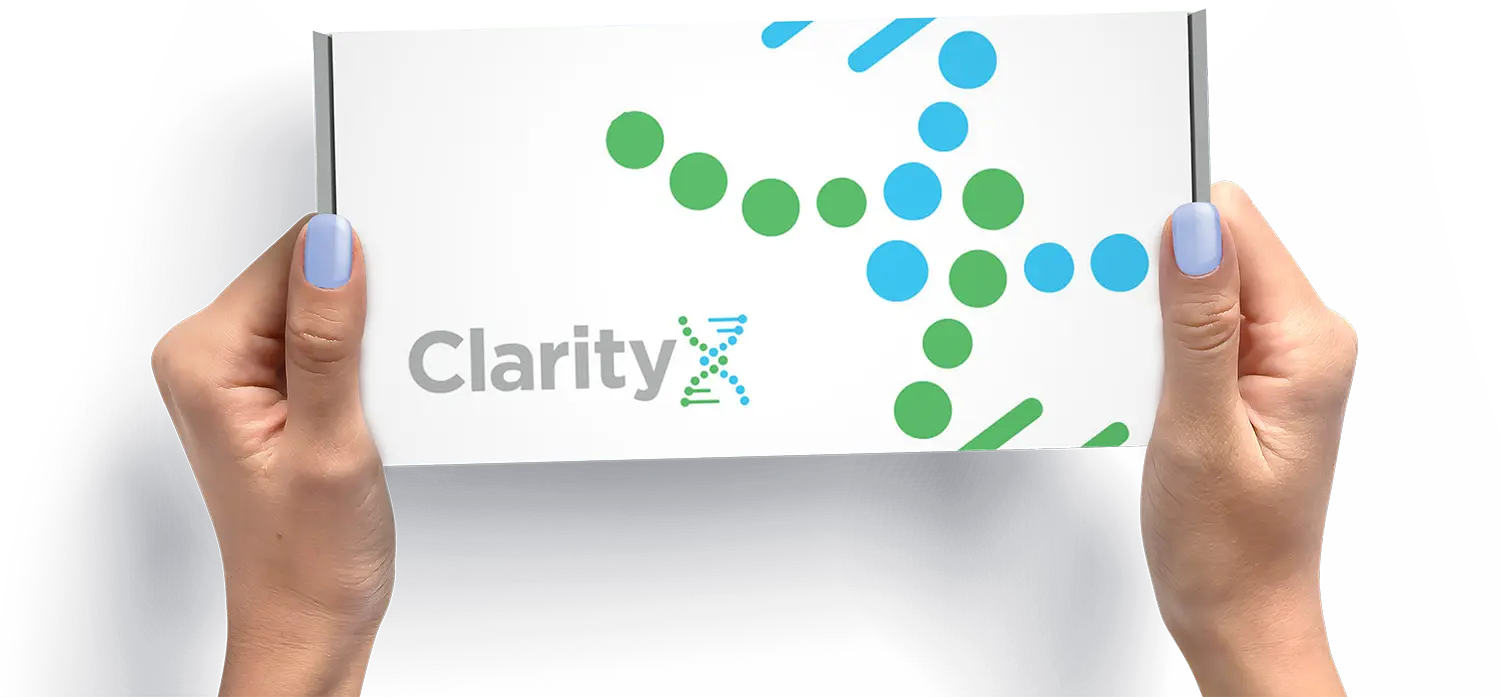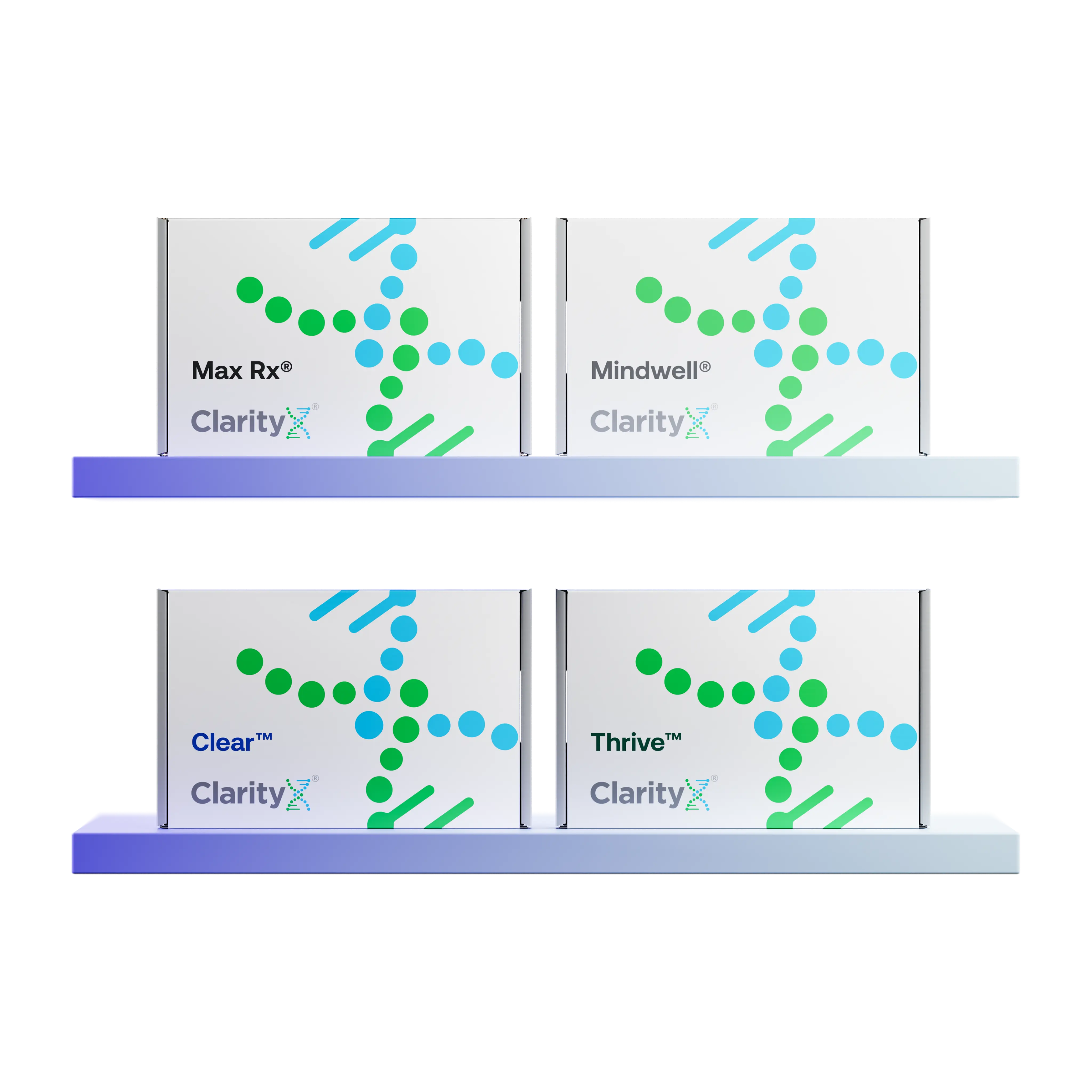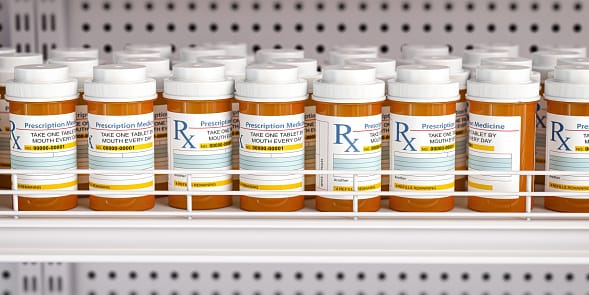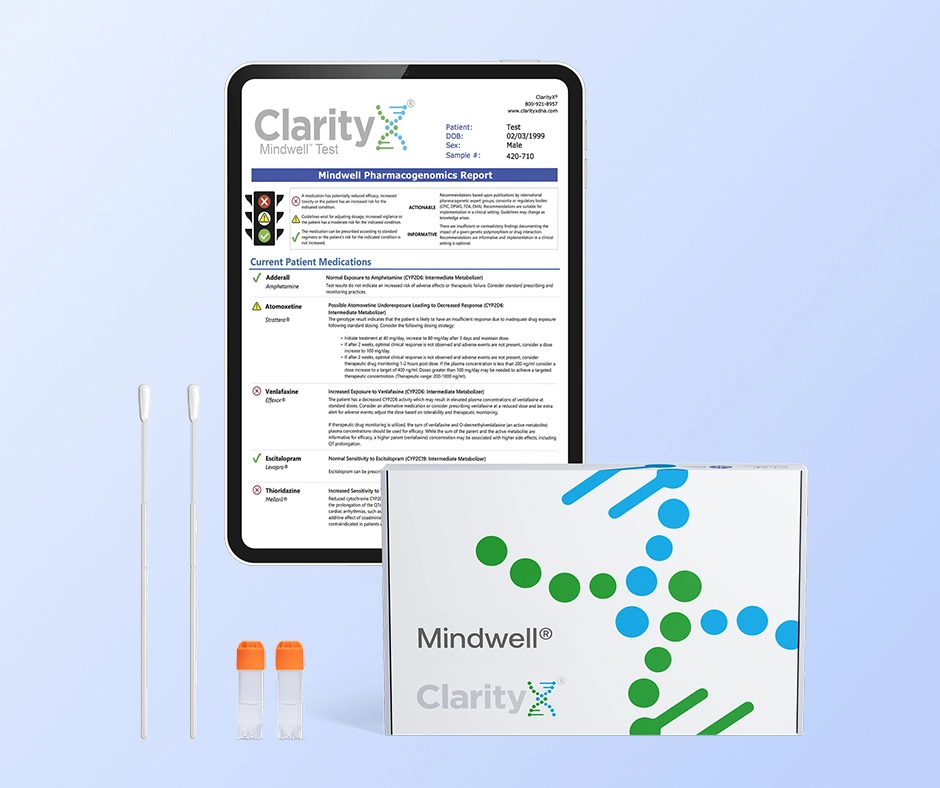Addiction to opioids is a serious problem affecting millions of people around the world. In recent years, the use of naloxone and naltrexone, two opioid antagonist drugs, has gained prominence in the field of addiction treatment. These medications play a crucial role in addressing the opioid crisis and helping individuals overcome substance use disorders. While naloxone and naltrexone are both used to combat the effects of opioid drugs, they have distinct functions and mechanisms of action.
In this blog, we will explore the difference between naloxone and naltrexone, their uses, mechanisms of action, dosing, side effects, accessibility, and their role in addiction treatment programs.
Key Takeaways
- Both medications block the effects of opioids.
- Naloxone is used in emergency situations to reverse the effects of opioid overdose and restore normal breathing. Immediate emergency medical attention is needed after its administration.
- Naltrexone aids in the long-term recovery of opioid use disorder and alcohol use disorder by reducing cravings.
- Naltrexone injections are often preferred by healthcare providers as opposed to tablets because they have been associated with lower rates of relapse.
- Naltrexone can interact with prescription, over-the-counter, and illicit drugs. It’s critical to provide an accurate medical history to ensure safe use.
Understanding Naloxone®: Its Uses and Functioning
Naloxone is an opioid antagonist medication primarily used in emergency situations to counteract the effects of opioid overdose. It is a fast-acting medication that can rapidly reverse respiratory depression, a potentially fatal consequence of opioid overdose.
Naloxone is available in various forms, including injectable formulations and nasal sprays, making it accessible for use in different emergency settings. This drug is so crucial that the U.S. Food and Drug Administration (FDA) approved over-the-counter versions of it in March 2023, allowing for easier and quicker access to life-saving drug administration.
The Uses of Naloxone
Naloxone is a life-saving medication used in the emergency treatment of opioid overdose. Opioid overdose can cause respiratory depression, leading to breathing difficulties and even respiratory failure. Naloxone acts quickly by reversing the effects of opioids on the central nervous system, primarily by blocking the opioid receptors. This helps to restore normal breathing, prevent further overdose effects, and save lives.
The uses of naloxone extend beyond just reversing opiate overdose, as it can also be used in the treatment of opioid addiction and as a preventative measure for those at risk of opiate overdose. In these instances, it’s combined with medications like buprenorphine as an abuse-deterrent.
Naloxone is available in an injectable form, which is commonly used by medical professionals in emergency settings. It can also be administered as a nasal spray, known as naloxone nasal spray, which is user-friendly and can be used by non-medical personnel. This has greatly increased the accessibility of naloxone in emergency situations, allowing for timely interventions to prevent overdose-related deaths.
The Mechanism of Naloxone
Naloxone works by binding to opioid receptors in the body, particularly in the central nervous system. These receptors are the targets of opioids, and their activation leads to the pleasurable effects of these drugs, as well as respiratory depression, sedation, and pain relief. As an opioid antagonist, naloxone competes with opioids for the same receptors, effectively blocking their action.
In the case of an opioid overdose, naloxone rapidly displaces the opioids from the receptors, reversing the life-threatening effects of the overdose. By restoring normal opioid receptor function, naloxone can reverse respiratory depression, increase heart rate, and restore consciousness. It is important to note that naloxone's effects are temporary, and medical help should always be sought after administering the medication.
An Insight into Naltrexone®: Its Applications and Working
Naltrexone, on the other hand, is a medication used in the long-term treatment of alcohol use disorder and opioid use disorder. Unlike naloxone, which is primarily used in emergency situations, naltrexone focuses on supporting sustained recovery by reducing cravings and the rewarding effects of opioids and alcohol. It is an opioid antagonist medication that helps individuals overcome opioid addiction and maintain abstinence.
The Uses of Naltrexone
Naltrexone is an effective medication in the management of alcohol use disorder and opioid use disorder. It is used to reduce the risk of relapse and help individuals maintain long-term recovery. Naltrexone works by blocking the effects of opioids and alcohol, reducing the desire to use these substances.
In the treatment of alcohol use disorder, naltrexone helps to reduce the pleasurable effects of alcohol, making it less rewarding. This can aid individuals in controlling their alcohol consumption, ultimately supporting them in their journey toward recovery.
For opioid use disorder, naltrexone offers long-term protection against the effects of opioids by blocking the opioid receptors. By preventing opioids from binding to these receptors, naltrexone reduces the cravings and pleasurable effects of opioids, thereby supporting recovery and minimizing the risk of relapse.
How Does Naltrexone Function?
Naltrexone acts as an opioid antagonist, meaning it blocks the opioid receptors in the brain. This mechanism prevents opioids from exerting their effects and reduces the cravings associated with substance use disorders. Naltrexone's chemical structure is similar to opioids, but it does not produce the same pleasurable effects.
By blocking the opiate receptors, naltrexone impairs the pleasurable effects of opioids, including euphoria and pain relief. This discourages individuals from using opioids, as the desired effects are diminished or absent. Because naltrexone can cause withdrawal, it’s important that individuals stop using opioids before taking naltrexone long-term. The primary intent is to reduce cravings.
Naltrexone supports recovery by reducing the rewarding effects of opioids, making it an important medication in addiction treatment programs. Understanding how naltrexone functions on opiate receptors is crucial to understanding its role in addiction treatment.
A Detailed Comparison: Naloxone vs Naltrexone
Now that we have explored the uses and mechanisms of naloxone and naltrexone individually let's compare these medications side by side. While both medications play a crucial role in addressing the opioid crisis and helping individuals overcome addiction, they differ in their functions and applications.
Understanding the differences between naloxone and naltrexone can help healthcare professionals and patients make informed decisions about the most appropriate medication for a particular situation.
Comparing the Efficacy of Naloxone and Naltrexone
Naloxone and naltrexone have different roles in addiction treatment, with naloxone being primarily used in emergency situations to reverse the effects of opioid overdose. In contrast, naltrexone focuses on long-term recovery by reducing cravings and the pleasurable effects of opioids and alcohol.
Naloxone's efficacy lies in its ability to rapidly act in emergency situations, counteracting the life-threatening effects of an opioid overdose. It is commonly administered through injection or nasal spray, making it readily available for use by medical professionals, emergency responders, and even non-medical personnel.
On the other hand, naltrexone's efficacy in addiction treatment lies in its ability to reduce the desire for opioids and alcohol, thus supporting recovery and minimizing the risk of relapse. Its long-lasting effects make it an important medication for individuals seeking sustained recovery from substance abuse.
Both naloxone and naltrexone play key roles in addressing the opioid crisis, tackling addiction, and offering hope to individuals who struggle with substance abuse. The use of these medications, in combination with comprehensive addiction treatment programs, can greatly improve the success of recovery journeys.
Dosing Variations between Naloxone and Naltrexone
The dosing of naloxone and naltrexone differs based on the purpose of their use and the individual patient's needs. Naloxone is typically administered in emergency situations, where the dose may vary based on the severity of the opioid overdose. Medical professionals often use injectable naloxone, adjusting the dose to achieve the desired effects in reversing the overdose. In some cases, a second dose of naloxone may be necessary if the initial dose is not effective.
Naltrexone, on the other hand, can be administered through different routes, including oral formulations and monthly injections. Healthcare providers determine the dose of naltrexone for addiction treatment based on the individual's specific needs and treatment goals.
Oral naltrexone is a prescription medication, while the monthly injection, known as Vivitrol, provides long-term support in maintaining abstinence from opioids and alcohol. For the management of opioid use disorder, the injectable form may be recommended over the oral form because it has resulted in lower rates of relapse. Part of this is due to its ease of use — daily doses are not required.
It is important for individuals to follow the prescribed dosing regimens for naloxone and naltrexone as directed by their healthcare providers. Adhering to the recommended doses ensures the medications' effectiveness in emergency situations and long-term recovery from addiction.
Evaluating the Side Effects and Safety of Naloxone and Naltrexone
While naloxone and naltrexone are effective medications in the field of addiction treatment, it is important to understand the potential side effects associated with their use. Like any medication, naloxone and naltrexone can cause side effects ranging from mild to severe. It is crucial for healthcare professionals and patients to be aware of these effects to make informed decisions about the use of naloxone and naltrexone.
Common Side Effects of Naloxone and Naltrexone
Naloxone and naltrexone may cause common side effects, although the frequency and severity may vary among individuals. Common side effects of both medications can include:
- Nausea.
- Headache.
- Gastrointestinal symptoms such as diarrhea or stomach cramps.
- Muscle pain.
- Joint pain.
- Changes in appetite.
Some individuals may experience skin rash, dizziness, fatigue, or changes in sleep patterns while using naltrexone. It is important to note that not everyone will experience these side effects, and they often subside over time as the body adjusts to the medication. Medical attention should be sought if the side effects become severe or persistent with the use of naltrexone. Immediate medical attention is always needed after administering naloxone for opioid overdose.
Additionally, Naloxone may also trigger flu-like symptoms such as fever, chills, runny nose, sneezing, and muscle weakness. These are symptoms associated with opioid withdrawal and require the support of a medical professional.
Severe Side Effects to be Aware of
While uncommon, serious side effects can occur with naloxone and naltrexone use. These side effects require prompt medical attention to ensure the individual's safety and well-being. It is important to be aware of these severe side effects and seek medical help if they occur, especially in emergency situations.
Allergic reactions, such as swelling of the face, lips, or throat, can occur in rare cases and require immediate medical intervention. Sudden mood changes, vision problems, or liver problems, including jaundice, should also be reported to a healthcare professional. Individuals experiencing severe side effects from naloxone, naltrexone, or any other medication should seek medical help immediately.
Who Should Abstain from Using Naloxone or Naltrexone?
While naloxone and naltrexone are effective medications in addiction treatment, there are certain individuals who should abstain from using them. It is important to consider potential risks, contraindications, and interactions with other medications before initiating treatment with naloxone or naltrexone.
Potential Risks and Contraindications
Naloxone and naltrexone may be contraindicated or require caution in certain populations. Using naltrexone while still under the influence of opioids can precipitate withdrawal symptoms, potentially leading to an uncomfortable and distressing experience for individuals with opioid dependence.
Individuals with liver disease should discuss the potential risks of naloxone and naltrexone with their healthcare providers, as these medications can affect liver function. Combining alcohol with naltrexone, particularly in excessive amounts, increases the risk of side effects. Similar to opioids, alcohol should be avoided while using the medication.
Additionally, individuals with a history of mental health disorders should consult with a healthcare provider before using naltrexone, as it may interact with certain psychiatric medications or exacerbate underlying mental health conditions.
Interactions with Other Medications
Naltrexone, like any medication, can interact with other substances, including prescription medications, over-the-counter drugs, and illicit substances. It is important to inform healthcare providers about all current medications, including opioids, as well as any histories of drug use, before initiating treatment with naltrexone.
Naltrexone can interact with alcohol and sedatives, leading to increased side effects, so caution should be exercised when combining these substances. Healthcare professionals can provide guidance on potential interactions and adjust medications, if necessary, to avoid potential risks.
Pharmacogenomic Testing
Pharmacogenomic testing a precision medicine tool that analyzes your DNA to predict how your body will process and respond to specific medications.
By examining genetic variants primarily those affecting liver enzymes the test reveals if you are likely to metabolize a drug too slowly (increasing the risk of severe side effects) or too quickly (making the medication ineffective).
This genetic insight allows doctors to move away from a "trial and error" prescribing method, helping them select the right drug and the right dose from the start to maximize treatment success while minimizing adverse reactions.
The Accessibility of Naloxone and Naltrexone
Making naloxone and naltrexone accessible to individuals in need is crucial in addressing substance abuse and preventing overdose-related deaths. Understanding how to obtain these medications can help ensure they are readily available in emergency situations and addiction treatment programs.
How to Obtain Naloxone?
Naloxone can often be obtained without a prescription at participating pharmacies, with some states implementing standing orders to allow pharmacists to dispense naloxone without an individual prescription. Community organizations and harm reduction programs may also distribute naloxone kits for free, ensuring accessibility to those at risk of opioid overdose. Naloxone can be purchased by family, friends, and community members regardless of their own history of opioid use. Current regulations are intended to make the medication readily accessible.
Healthcare providers, including primary care physicians, addiction specialists, and emergency medical services, can also prescribe naloxone and provide education on its proper use. Online resources and hotlines can guide individuals on how to access naloxone in emergencies and provide information on brand names and the Mental Health Services Administration's efforts to expand naloxone access across the United States.
How to Obtain Naltrexone?
Naltrexone is a prescription medication that requires medical assistance for procurement. Healthcare providers, including addiction treatment centers, clinics, and telehealth services, can assist in prescribing and obtaining naltrexone.
The National Institute on Drug Abuse provides information on common brand names and treatment options for opioid use disorder, ensuring that individuals have access to the necessary medical resources for naltrexone treatment. Some insurance plans may cover the cost of naltrexone prescriptions, and individuals should check with their insurance providers to determine coverage eligibility.
Consulting with a healthcare professional can help individuals navigate the process of obtaining naltrexone, ensuring that they receive the appropriate medical assistance and support for their recovery journey. In addition to medication, psychological and social support are crucial during the recovery process.
The Role of Naloxone and Naltrexone in Choosing Recovery Over Addiction
Naloxone and naltrexone play essential roles in addiction treatment, offering hope and support to individuals seeking recovery from substance use disorders. These medications, when used alongside comprehensive addiction treatment programs, can make a significant impact on overcoming addiction and choosing a healthier lifestyle.
How Can Naloxone Help Overcome Addiction?
Naloxone can help individuals overcome addiction by providing emergency treatment for opioid overdose. Opioid overdose deaths have reached alarming rates, and naloxone acts as an instrumental tool in preventing drug overdose deaths. Its use during an overdose can reverse the effects of opioids, restoring normal breathing and consciousness. By rapidly countering the respiratory depression caused by opioids, naloxone gives individuals a second chance at life and an opportunity to seek addiction treatment for opioid misuse.
Distribution of naloxone kits in communities, along with education on its administration, has been instrumental in increasing access to this life-saving medication. Naloxone nasal spray, in particular, offers an easily accessible form of emergency treatment for opioid overdose, even for non-medical personnel. Timely administration of naloxone is critical in preventing irreversible consequences of opioid overdose and providing individuals with an opportunity to choose recovery over addiction.
The Impact of Naltrexone on Addiction Recovery
Naltrexone plays a crucial role in addiction recovery, especially in the management of alcohol use disorder and opioid use disorder. By reducing cravings and diminishing the pleasurable effects of alcohol and opioids, naltrexone supports individuals long-term in abstaining from substance abuse and maintaining long-term recovery.
In alcohol use disorder, naltrexone reduces the desire to drink alcohol, making it easier for individuals to control their alcohol consumption and minimize the risk of relapse. The medication effectively diminishes the pleasurable effects of alcohol, helping individuals break the cycle of addiction and focus on building a healthier, substance-free life.
For opioid use disorder, naltrexone helps individuals navigate the challenges of substance abuse by blocking the opioid receptors and reducing the cravings for opioids. By impairing the pleasurable effects of opioids, naltrexone supports recovery efforts. It minimizes the risk of relapse, enabling individuals to address the underlying factors contributing to their substance use disorder and focus on long-term healing.
Is it Possible for Naloxone and Naltrexone to Coexist in an Addiction Treatment Program?
Absolutely. In fact, naloxone and naltrexone can complement each other in addiction treatment programs, addressing different aspects of substance use disorders. While naloxone is primarily used in emergency situations to reverse the effects of opioid overdose, naltrexone focuses on long-term recovery by reducing cravings and the pleasurable effects of opioids and alcohol.
For individuals with opioid use disorder or opiate use disorder, naloxone plays a critical role in emergency treatment, ensuring the availability of an effective life-saving medication in the event of an overdose. This immediate intervention can provide individuals with an opportunity to seek addiction treatment and start their journey toward recovery.
Naltrexone, on the other hand, supports long-term recovery efforts by reducing cravings and the pleasurable effects of opioids and alcohol. It helps individuals maintain abstinence from these substances, minimizing the risk of relapse and supporting sustained recovery.
By incorporating naloxone and naltrexone into addiction treatment programs, healthcare professionals can address the immediate concerns of overdose prevention while providing the tools and support needed for long-term healing and recovery.
Conclusion
In conclusion, understanding the difference between Naloxone and Naltrexone is crucial for anyone involved in addiction treatment or emergency response. While both medications have their uses, evaluating their efficacy, dosing variations, side effects, and safety profiles is important.
Additionally, it's essential to consider individual risk factors and potential drug interactions when deciding which medication is appropriate for each patient. Both Naloxone and Naltrexone play a significant role in choosing recovery over addiction, with Naloxone being a lifesaving tool in emergency situations and Naltrexone supporting long-term sobriety. Ultimately, the coexistence of these medications in an addiction treatment program can provide a comprehensive approach to helping individuals overcome addiction.
Resources:
https://www.ncbi.nlm.nihttps://medlineplus.govhttps://www.cdc.gov/drugoverdose/epidemic/index.html
https://medlineplus.gov/druginfo/meds/a612022.html
https://medlineplus.gov/druginfo/meds/a685041.html
https://www.ncbi.nlm.nih.gov/pmc/articles/PMC5993595/






